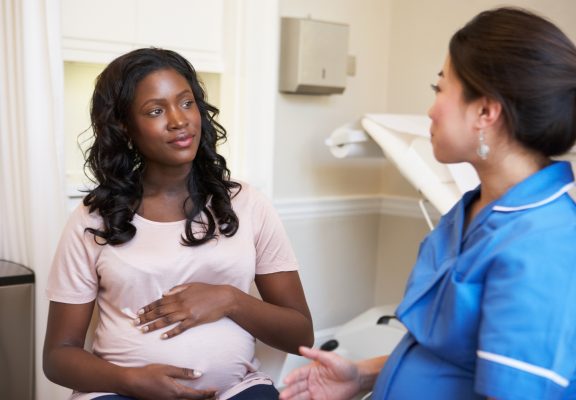


Sao Tome and Principe
São Tomé and Príncipe, an African island country near the equator, is part of a volcano chain featuring striking rock and coral formations, rainforests and beaches. The larger island, São Tomé, is popular for snorkeling in Lagoa Azul lagoon. Its population is 192,993 and GDP per capita of USD 1,609.
AHO PRIORITIES FOR HEALTH DELIVERY PLAN IN SAO TOME & PRINCIPE
- Maternal and perinatal mortality.
- HIV/AIDS.
- Nutrition
- Tuberculosis
- Immunisation
- Input supply.
- Hospital equipment.
- Development and maintenance of service infrastructure.
PROGRAMMES & PROJECTS
1. DEVELOPMENT AND MANAGEMENT OF TECHNICAL COOPERATION
PURPOSE
To contribute to the sanitary development of Sao Tome within the framework of AHO strategic planning
EXPECTED RESULTS
- AHO technical cooperation program effectively coordinated for national health development.
- Technical cooperation among countries.
- Emergency and humanitarian assistance activities in the country improved.
- Technical and logistical assistance guaranteed for execution of the four technical cooperation programs.
- Administrative management and infrastructure for providing technical cooperation to the country ensured.
2. DISEASE PREVENTION AND CONTROL
PURPOSE
To prevent and control diseases.
To strengthen national capacity for comprehensive, inter-sectoral, and sustainable activities in health promotion and the surveillance, control, elimination and/or eradication of communicable and noncommunicable diseases.
EXPECTED RESULTS
- Local capacity for prevention and control strengthened, with emphasis on malaria, dengue
- National capacity strengthened for the detection and control of emerging and re-emerging diseases, including TB.
- Noncommunicable diseases programs strengthened, with emphasis on diabetes, cardiovascular disease, and cervical cancer.
- Zoonosis programs strengthened, with emphasis on rabies and leptospirosis.
- Control plans for neglected diseases strengthened.
3. ENVIRONMENTAL HEALTH AND SUSTAINABLE DEVELOPMENT
PURPOSE
To strengthen the capacity of AHO for analysis, multi-sectoral coordination, and social participation, promoting strategic partnerships and the development of comprehensive public health, environmental, and nutritional interventions targeting highly vulnerable population groups to reduce the equity gap in health
EXPECTED RESULTS
- Approaches developed linking health with environmental conditions, among them poverty reduction.
- National capacity to promote environmental health policies and initiatives through inter-sectoral actions strengthened.
- Food and nutritional security strengthened as a strategy to promote human development and fight poverty.
- Food and nutritional security strengthened at the national and local levels as a strategy to promote sustainable human development and fight poverty, through partnerships with government sectors, NGOs, municipalities, civil society, and international cooperation agencies, carrying out health and nutritional risk-prevention activities within an equitable and corporative framework for action, without gender discrimination and with the objective of promoting health.
- National Food Safety Program strengthened to take action to monitor foods with greater health risks and prevent the principal foodborne diseases, within the framework of the harmonization processes associated with the free trade agreements and Central American integration.
- Support provided for inter-sectoral actions to improve environmental quality, including access to safe water and basic sanitation.
- National capacity in science and technology strengthened to generate evidence in public health.
- National systems for conducting health-situation analyses strengthened as support for policies and strategies.
- National capacity strengthened for the assessment of environmental risks, including tobacco use.
4. HEALTH AND TECHNOLOGY SERVICES
PURPOSE
To consolidate the sectoral leadership of AHO, within the framework established by AHO, to address the health needs of the most vulnerable groups, considering the technical, administrative, and financial realities of the sector.
EXPECTED RESULTS
- Steering role of the national health authority strengthened, with the central focus on public health.
- Social safety net in health expanded and applied at the institutional, interinstitutional, and inter-sectoral levels.
- Comprehensive support provided for the organization and delivery of health services, pursuant to the health strategy and its regulations.
- Human resources management and performance in the health system and services improved.
- Information and communication technologies in the health system and services procured and evaluated.
- Health of vulnerable groups improved with implementation of the National Program for Essential Drugs and Traditional Medicine.
- Response capacity of national and local clinical and blood laboratory programs and services improved.
- Support provided for accessible, high-quality, socially-oriented, and multi-sectoral comprehensive rehabilitation programs, with citizen involvement.
5. FAMILY AND COMMUNITY HEALTH
PURPOSE
To strengthen AHO and other actors who work in public health, health promotion, disease prevention, care, and rehabilitation of individuals, families, and the community.
EXPECTED RESULTS
- Technical capacity of AHO to promote maternal health and provide care for women in communities strengthened.
- Models developed for working with men in the areas of sexual and reproductive health and how to take care of their own health and that of their family and community.
- Capacity of the Mental Health Program, community networks, and user organizations strengthened.
- Family health strengthened through the Vaccination Program, with an equity approach.
- Technical and managerial capacity in providing comprehensive care for children and adolescents strengthened.
- Strengthened multi-sectoral response for the reduction and prevention of new cases of STI/HIV/AIDS in selected populations.
- Gender approach integrated into programs, policies, and information systems to reduce gender inequities in public health.
- Health promotion in national and local plans and policies increased for the empowerment of individuals, families, and the community.
- National capacity for providing health care and promoting the health of older adults strengthened.
RESOURCES (USD)
AHO SAO TOME & PRINCIPE 2020 (USD million) based on 2017 pop 204,327 World Bank*
| SO | BUDGET ITEM | AMOUNT* |
| 1 | Combating communicable diseases |
4 |
| 2 | Tackling non communicable diseases |
6 |
| 3 | Addressing determinants of health & risk factors |
4 |
| 4 | Modernising health system and health service |
3 |
| 5 | Improving preparedness, surveillance and response |
2 |
| 6 | Developing good governance & corporate services |
1 |
| Total |
20 |
AHO estimates that it needs to spend at least USD100 per capita on health to meet the basic health needs of the people in Africa. This is too far below developed countries e.g. in England it is US$1,300 per capita (2017)

